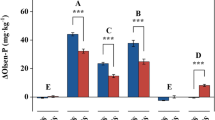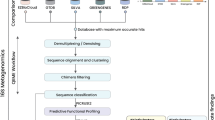Abstract
METHODS for isolating members of the Acrasieæ, which are slime moulds producing pseudoplasmodia and inhabiting soil, have been reported by various workers1–3. The usual procedure is to inoculate directly on special media soil crumbs or soil/water suspensions from samples being tested. The bacteria from the soil develop colonies which in turn become the food source for the feeding myxamœbæ of the slime moulds.
This is a preview of subscription content, access via your institution
Access options
Subscribe to this journal
Receive 51 print issues and online access
$199.00 per year
only $3.90 per issue
Buy this article
- Purchase on SpringerLink
- Instant access to full article PDF
Prices may be subject to local taxes which are calculated during checkout
Similar content being viewed by others
References
Raper, K. B., J. Wash. Acad. Sci., 26, No. 2, 169 (1951).
Singh, B. N., Nature, 157, 133 (1946).
Kitzke, E. D., Pap. Mich. Acad. Sci., Arts and Letters, 34, 13 (1948).
Kitzke, E. D., Pap. Mich. Acad. Sci., Arts and Letters, 35, 25 (1949).
Raper, K. B., J. Agric. Res., 55, 289 (1937).
Raper, K. B., J. Elisha Mitchell Sci. Soc., 56, 241 (1940).
Author information
Authors and Affiliations
Rights and permissions
About this article
Cite this article
KITZKE, E. A New Method for Isolating Members of the Acrasieæ from Soil Samples. Nature 170, 284–285 (1952). https://doi.org/10.1038/170284a0
Issue date:
DOI: https://doi.org/10.1038/170284a0
This article is cited by
-
Studies in cellular slime moulds from Indian soils
Proceedings / Indian Academy of Sciences (1961)
-
Techniques for the observation and isolation of soil microorganisms
The Botanical Review (1961)



